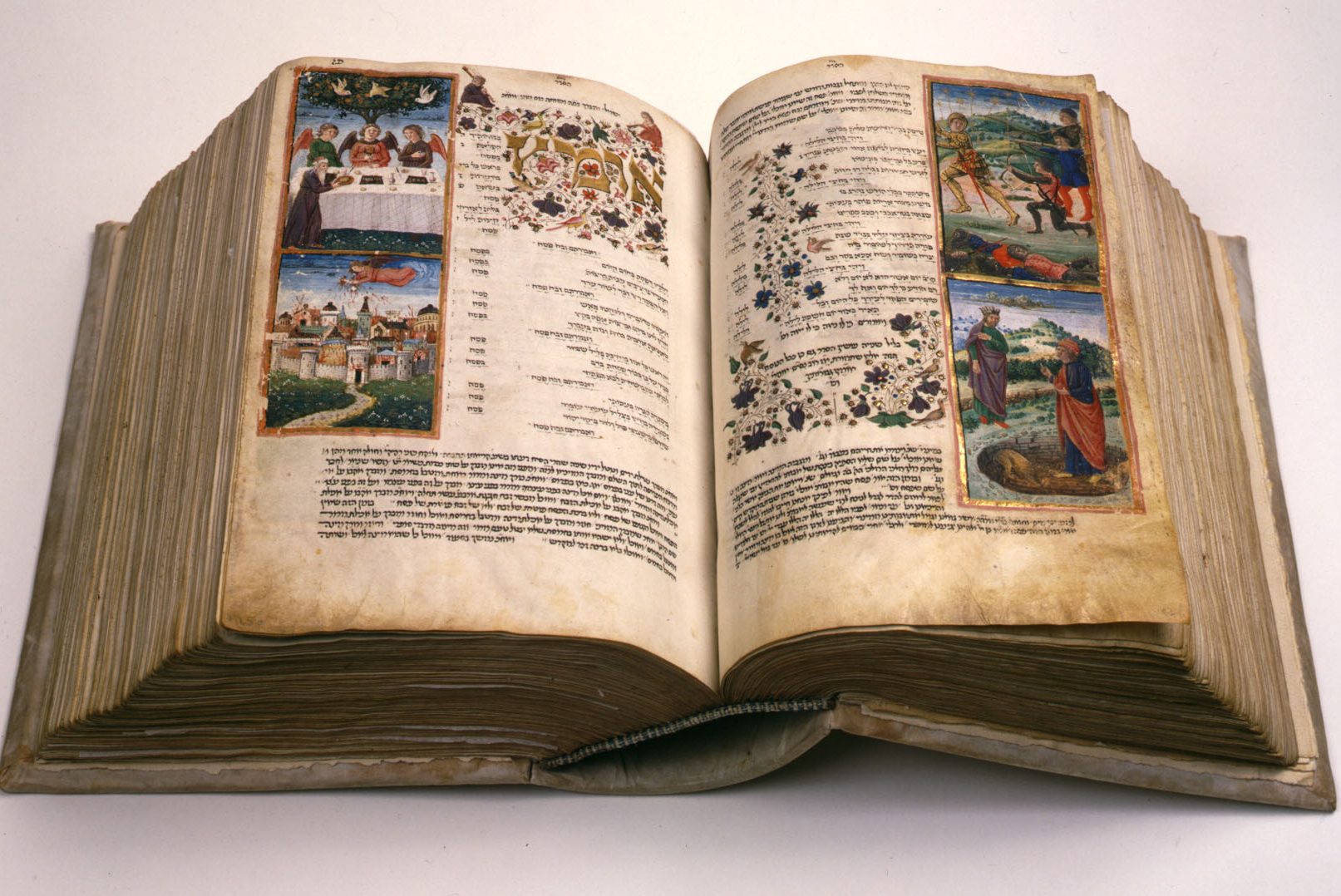For the first 5 steps click here: “The First Five”
Actually, the means of accomplishing the “Mitzvot,” the Obligations, encountered in the next six steps, is primarily eating and drinking. But, as always, in Judaism, there is a lot of meaning baked into those lean and mean(ingful) Matzot!
 The six steps discussed in this section are:
The six steps discussed in this section are:
- 6. “Rachtzah”
- 7. “Motzi”
- 8. “Matzah”
- 9. “Marror”
- 10. “Korech”
- 11. “Shulchan Orech”
In detail, they are as follows:
6. “Rachtzah” – Wash the hands before the meal, and recite the blessing, “Blessed are You, L-rd our G-d, King of the Universe, Who Made us Holy with His Obligations, and Commanded us concerning the washing of the hands.” This is the regular blessing recited before every meal in which bread is eaten. Of course, at the Seder, the regular “chametz-dik,” bread will not be eaten; only unleavened bread, Matzah, will be eaten.
7. “Motzi” – Recite the blessing associated with “bread” while holding the remaining approximately 2 and 1/2 Matzot (recall that the rest of the middle Matzah was used for the Afikoman, probably by now long gone, and in the hands of the children), “Blessed are You, L-rd our G-d, Who Has taken the bread out of the ground.” Immediately (or as soon as possible),…
8. … “Matzah” – Let go of the bottom Matzah, which will be used in the Hillel Sandwich (“Korech” – Step 10), and pronounce the blessing over the Matzah, “Blessed are You, L-rd our G-d, Who Sanctified us [same as “made us holy”] with His Obligations, and Commanded us concerning the Eating of Matzah.”
All members of the Seder group receive an appropriate amount of Matzah, preferably with some coming from the Top Matzah [to satisfy the requirement of “Motzi”] and part coming from the Middle Matzah (to satisfy the Obligation of Matzah). The Matzah should be eaten within the prescribed time limit (you can understand why there must be a time limit, because if someone ate a piece of Matzah now and another three hours later, there is not much of a connection between nibble and nibble), as detailed in the “Shiurim: Measures and Minimums Section of the Condensed Ritual Guide to the Passover Seder. Naturally, this also has to be done while leaning on the left side, and juggling three lit candlesticks (allright, forget the juggling!).
9. “Marror” – Eat the Bitter Herbs (actually, Romaine Lettuce isn’t that bitter). One of the following is usually used: grated horseradish, Romaine Lettuce stalks (preferable) or Romaine Lettuce Leaves (less preferable, because of the occasional presence of bugs, which can be difficult to find, and which need to be rinsed (the leaves, not the bugs) and checked carefully). As above, check the Condensed Ritual Guide for minimum amounts. The blessing is recited, “Blessed are You, L-rd our G-d, Who has Made us Holy with His Obligations, and commanded us concerning the Eating of Marror.”
All members of the Seder group receive an appropriate amount of Marror, dip it lightly in Charoset, and eat it within the prescribed time limit, as covered by the Guide referred to above. When eating the Marror, the purpose of which is to remind us of the bitterness of slavery, we don’t eat it while reclining. Can you figure out why?
10. “Korech” – Eat the (Pesach, Matzah and Marror) Sandwich; Pesach is not shown bolded, because, to our sorrow, we don’t have the Temple currently, and are unable now to offer the Pesach sacrifice (“hopefully next year!” – we do in fact express this wish during the Seder).
No! It was not the Earl of Sandwich who invented that culinary delight. It was Hillel! That great Tanna (Sage of the Mishnah), who lived towards the end of the time that the second Temple stood, used to make a sandwich with meat from the Pesach Sacrifice combined with Matzah and Marror (definitely without mustard, which is chametz). As a reminder of the Temple, we do the same, minus the Pesach Sacrifice which, until the building of the Third Temple, is unavailable. Before we eat, we make this declaration:
“We do the following in commemoration of Hillel and of the Temple: This is what Hillel used to do in the time that the Temple stood. He would combine Pesach with Matzah and Marror and eat them together, to fulfill that which is written, ‘Together with Matzah and Marror you should eat IT! (where IT is the Pesach Sacrifice).’ “
11. “Shulchan Orech” – We now eat the Festive Meal (actually, the term really means the “Set Table,” similarly to the great compendium of Jewish Law, called the Shulchan Aruch) of Pesach. In fact, it’s hardly possible to imagine anyone still having an appetite after all the eating that’s gone before, but with the L-rd’s help, we muster up (again, not mustard!) a hearty appetite, to eat a meal with the restriction of no roasted meat(!), because that could potentially be confused with the actual Pesach Sacrifice. The Seder meal is described as “let them eat the meat on this night, roasted with fire and eaten together with Matzot and Marror.” (Shemot 12:8)

